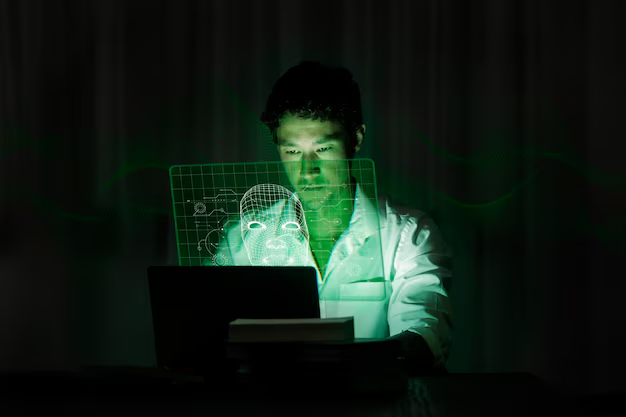Deepfake technology, which uses artificial intelligence (AI) to create hyper-realistic but fabricated images, videos, and audio, has rapidly evolved in recent years. While it has legitimate uses in entertainment, education, and the arts, its misuse raises significant concerns. The potential dangers of deepfakes are wide-ranging, from spreading misinformation to undermining personal privacy and security. Below, we explore the main risks associated with deepfake technology and the broader implications it has for individuals, businesses, and society.
1. Misinformation and Fake News
Deepfakes can be used to create convincing fake videos or audio clips of public figures, politicians, or celebrities. These manipulated media can easily go viral on social media, leading to the spread of false information and potentially influencing public opinion or elections.
Potential Dangers:
- Political Manipulation: Deepfakes can be used to fabricate speeches or interviews by politicians, potentially swaying voters or creating distrust in political processes.
- False News Reports: Media outlets might unintentionally or intentionally use deepfake videos to spread fake news, leading to confusion and misinformation among the public.
2. Defamation and Reputation Damage
Deepfakes can be employed to damage the reputation of individuals by portraying them engaging in actions they never actually committed. This can be particularly damaging in professional, political, or personal contexts.
Potential Dangers:
- Personal and Professional Harm: A deepfake video of someone committing a crime, engaging in inappropriate behavior, or making offensive statements can cause long-term harm to their reputation, even if the video is later debunked.
- Harassment: Individuals could become targets of online harassment, blackmail, or extortion, with deepfakes used to fabricate compromising situations.
3. Cybersecurity Threats
Deepfakes can be weaponized for cybercrime, especially when used to impersonate individuals in positions of authority. Fraudsters may use deepfakes to carry out scams or social engineering attacks.
Potential Dangers:
- Impersonation in Fraud: Cybercriminals could create deepfake audio or video of executives, using it to authorize wire transfers or direct financial transactions, potentially stealing millions from businesses.
- Identity Theft: Hackers can use deepfakes to impersonate victims, gaining access to sensitive information, accounts, or personal data.
4. Privacy Violations and Consent Issues

Deepfake technology raises serious concerns about personal privacy. Unauthorized use of someone’s image, voice, or likeness can be a violation of their privacy and consent, especially when deepfake technology is used without the individual’s knowledge or permission.
Potential Dangers:
- Non-consensual Pornography: One of the most alarming uses of deepfakes is in the creation of fake pornography involving individuals who never consented to it. This has resulted in severe emotional distress for the victims.
- Loss of Control Over Personal Data: As deepfake technology becomes more accessible, individuals may lose control over how their likeness is used, leading to unauthorized exploitation.
5. Erosion of Trust in Media and Information
As deepfake technology becomes more sophisticated, it becomes harder for people to distinguish between genuine content and manipulated media. This can contribute to widespread skepticism about the truthfulness of any media, eroding trust in news outlets, social media, and other sources of information.
Potential Dangers:
- Credibility Crisis: The public may become increasingly distrustful of visual or audio media, believing that anything could be fabricated. This could undermine the reliability of news organizations and hinder the ability of society to make informed decisions.
- Difficulty in Verifying Content: Journalists, researchers, and fact-checkers may find it more challenging to verify the authenticity of media, leading to greater difficulties in distinguishing truth from fiction.
6. Legal and Ethical Concerns
The rise of deepfake technology brings with it significant legal and ethical challenges. Current laws may not be equipped to address the full scope of the issues deepfakes create, leading to a legal gray area where perpetrators can exploit the technology without facing consequences.
Potential Dangers:
- Lack of Legislation: Existing laws may not adequately address the use of deepfakes, leaving victims with limited recourse. For example, defamation or privacy laws may not be sufficient to handle the complexities of deepfake-related cases.
- Ethical Dilemmas: The widespread use of deepfakes raises questions about ethics, such as the responsibility of companies creating and distributing AI technologies, or whether consent should be required for the use of an individual’s image or voice.
7. Impact on Elections and Democracy
Deepfakes can have a profound impact on elections by creating false narratives about political candidates, leading to voter manipulation. In a climate of deepfake content, it’s becoming harder to determine what is true, creating risks to democratic processes and electoral integrity.
Potential Dangers:
- Election Interference: Deepfakes could be used to fabricate videos of candidates making controversial statements or engaging in unethical behavior, potentially swaying voters or undermining the integrity of an election.
- Polarization and Divisiveness: By manipulating public figures and events, deepfakes could exacerbate societal divisions and polarize communities, making it harder for people to engage in meaningful dialogue.
8. Manipulation of Historical Records
As deepfake technology continues to evolve, there is a risk that historical records, documentaries, and other forms of factual media could be manipulated to present a distorted version of history.
Potential Dangers:
- Distorted History: Deepfakes could be used to alter historical footage or create false narratives about past events, which could mislead future generations.
- Cultural Manipulation: Governments, organizations, or individuals may use deepfakes to reshape history in their favor, leading to misinterpretation and misunderstanding of key historical events.
Conclusion
While deepfake technology has the potential to revolutionize industries such as entertainment, education, and media, its misuse poses serious risks to individuals, businesses, and society. From spreading misinformation to damaging reputations, violating privacy, and undermining democratic processes, the dangers of deepfakes are real and growing. To mitigate these risks, it’s crucial to implement robust legal frameworks, technological safeguards, and public awareness initiatives to address the ethical and security challenges posed by deepfake technology.
FAQs
1. What is deepfake technology?
Deepfake technology uses artificial intelligence to create manipulated video, audio, or images that appear real but are entirely fabricated. It is often used to impersonate people or create false narratives.
2. How can deepfakes be used to manipulate elections?
Deepfakes can be used to create fake videos or audio of political candidates, making them appear to say or do things they never did. These videos can spread rapidly on social media, influencing voters’ perceptions.
3. Can deepfakes be detected?
While detecting deepfakes is becoming easier with the development of detection tools, as the technology advances, it is increasingly difficult to identify manipulated media without specialized tools or expertise.
4. What are the legal implications of using deepfakes?
The use of deepfakes raises serious legal questions, particularly concerning defamation, privacy violations, and consent. Current laws are often inadequate to address the full scope of deepfake-related issues.
5. How can deepfake technology be regulated?
Governments and organizations are working to introduce regulations that make the creation and distribution of malicious deepfakes illegal, including penalties for those who use deepfakes for defamation, fraud, or harassment.


